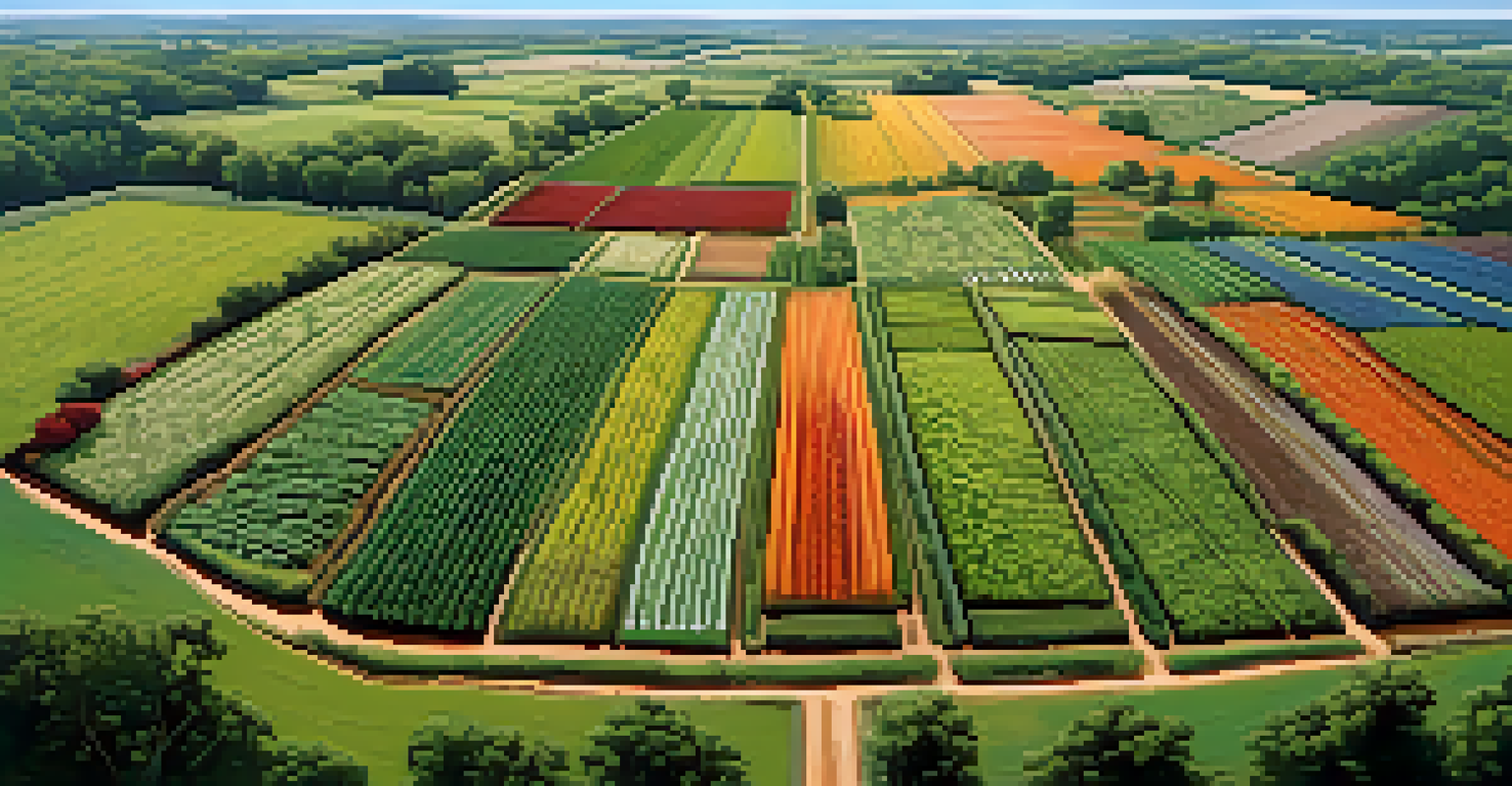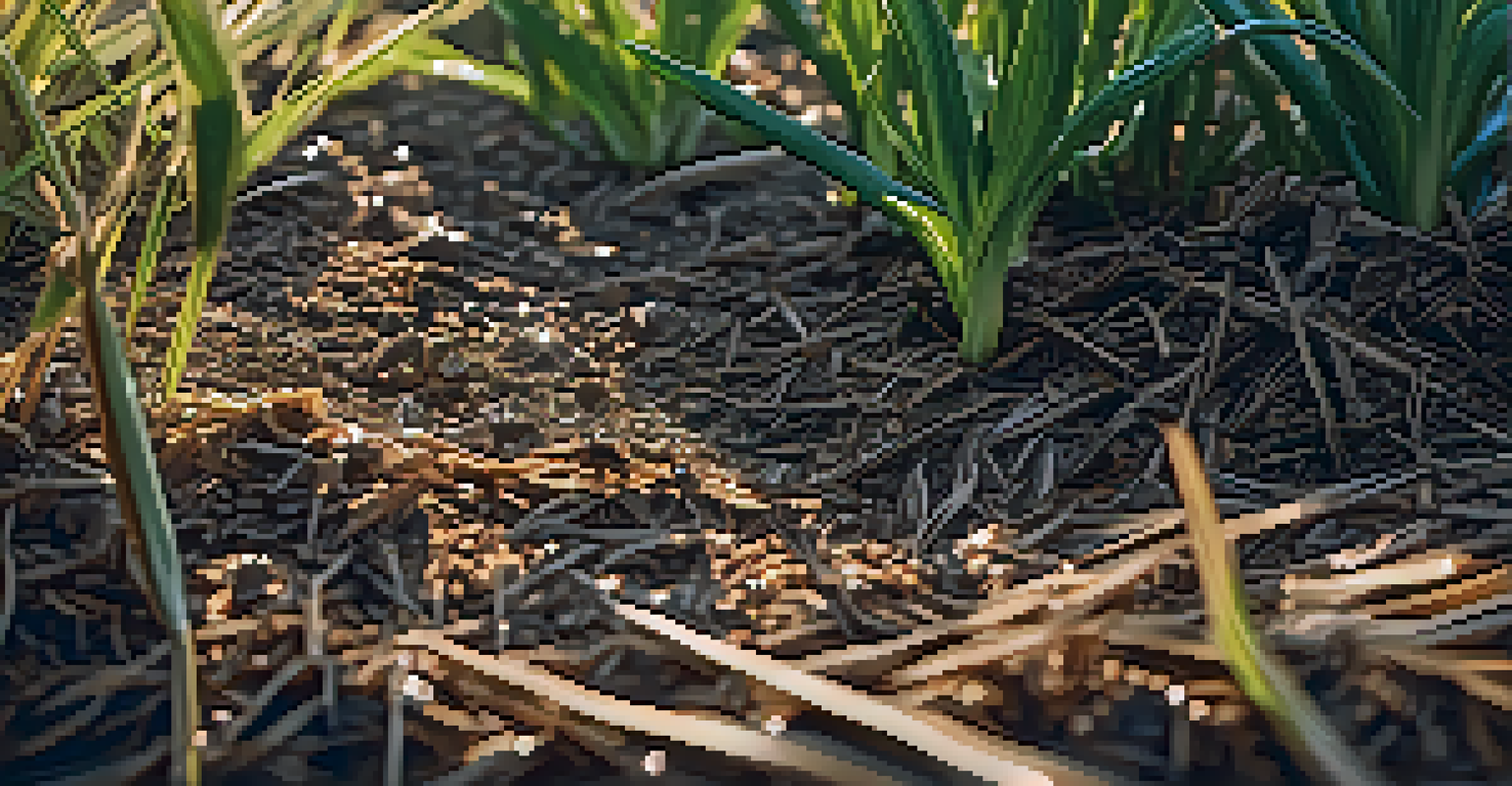Top Practices for Improving Soil Quality Naturally

Understanding Soil Quality and Its Importance
Soil quality plays a crucial role in plant health and productivity. Healthy soil provides essential nutrients, retains moisture, and supports beneficial organisms that contribute to a thriving ecosystem. Without good soil quality, plants struggle to grow, which can lead to poor yields and unhealthy crops.
Healthy soil is the foundation of healthy plants, and healthy plants are the foundation of a healthy ecosystem.
Think of soil as the foundation of a house; just as a sturdy base supports a building, healthy soil supports plant life. When soil is rich in organic matter and nutrients, it becomes a nurturing environment for roots to thrive. This ultimately leads to healthier plants and more bountiful harvests.
Moreover, improving soil quality naturally helps in promoting sustainable practices. By focusing on enhancing the soil rather than relying on synthetic fertilizers, we contribute to a healthier planet and ecosystem, making it vital for future generations.
Embrace Composting for Nutrient-Rich Soil
Composting is one of the simplest and most effective ways to improve soil quality. By recycling kitchen scraps and yard waste, you create nutrient-dense compost that enriches the soil. This organic matter not only adds essential nutrients but also improves soil structure, helping it retain moisture.

Imagine compost as a superfood for your soil; it feeds the microorganisms that break down organic matter and release nutrients. Adding compost to your garden is like giving your plants a healthy meal, which boosts their growth and resilience. It's a win-win situation for both your plants and the environment!
Soil Quality is Essential for Plants
Healthy soil provides nutrients and supports ecosystems that lead to better plant growth and yields.
To get started, set up a compost bin in your backyard or kitchen. Layer green materials like vegetable scraps with brown materials like dried leaves, and watch as they break down into a rich, dark compost that you can use to revitalize your garden.
Utilize Cover Crops to Enhance Soil Structure
Cover crops are plants grown primarily to cover the soil rather than for harvest. They play a vital role in enhancing soil structure and preventing erosion, especially during fallow periods. By planting cover crops, you're essentially giving your soil a protective blanket that enriches it over time.
The best fertilizer is the gardener's shadow.
Consider cover crops like a natural shield for your soil. They help prevent weeds, reduce nutrient runoff, and improve soil fertility when they decompose. As the cover crops grow, their roots penetrate the soil, creating channels that enhance aeration and water infiltration.
Popular cover crops include clover, vetch, and rye. When incorporated into your crop rotation, they not only improve soil quality but also support biodiversity by providing habitats for beneficial insects.
Practice Crop Rotation for a Balanced Soil Ecosystem
Crop rotation is the practice of alternating the types of crops grown in a specific area over time. This method helps to prevent nutrient depletion, as different plants absorb varying nutrients from the soil. By rotating crops, you promote a balanced ecosystem that can lead to healthier soil.
Think of crop rotation as a way to keep your soil happy and healthy. For instance, planting legumes one season can replenish nitrogen levels, while deep-rooted plants can help break up compacted soil. This diversity not only improves soil quality but also reduces the risk of pests and diseases.
Composting Enriches Soil Naturally
By recycling organic waste into compost, you create nutrient-rich soil that promotes plant health.
To get started, create a simple rotation plan that includes a variety of crops. This can be as straightforward as alternating between leafy greens, root vegetables, and legumes, ensuring that each season brings something new and beneficial to the soil.
Incorporate Mulching for Moisture Retention
Mulching involves covering the soil surface with organic materials like straw, wood chips, or grass clippings. This practice not only suppresses weeds but also helps retain moisture, which is essential for maintaining soil quality. As the mulch breaks down, it enriches the soil with organic matter.
Imagine mulch as a cozy blanket for your soil; it keeps it warm, moist, and protected from harsh weather conditions. It acts as a barrier against evaporation, ensuring that your plants have the hydration they need to thrive. Plus, it adds a visually appealing touch to your garden.
To create an effective mulch layer, apply 2-4 inches of material around your plants, being careful not to smother them. Refreshing the mulch regularly will ensure continued benefits for your soil and plants.
Encourage Biodiversity for a Healthier Soil Ecosystem
Biodiversity in your garden or farm means having a variety of plants, animals, and microorganisms coexisting. This diversity promotes a balanced ecosystem that enhances soil quality through natural processes. By encouraging a wide range of life, you're creating a resilient environment for your plants.
Think of biodiversity as a symphony; each species plays its part in creating a harmonious ecosystem. For instance, certain plants attract beneficial insects that help control pests, while diverse root systems can improve soil structure and nutrient cycling. This interconnectedness is vital for a thriving soil ecosystem.
Biodiversity Boosts Soil Health
Encouraging a variety of plants and organisms enhances soil quality and supports a thriving ecosystem.
To boost biodiversity, consider interplanting flowers with your vegetables or creating habitats for beneficial insects. By fostering a rich ecosystem, you're investing in the long-term health of your soil and crops.
Avoid Chemical Inputs and Embrace Organic Practices
To improve soil quality naturally, it's essential to minimize or eliminate the use of synthetic chemicals. Chemical fertilizers and pesticides can harm beneficial soil organisms and degrade soil health over time. By adopting organic practices, you not only protect the soil but also promote sustainable agriculture.
Imagine your soil as a living organism; just as we benefit from a healthy diet, so does the soil thrive on natural inputs. Using organic amendments like compost, manure, or green manures can replenish nutrients without the harmful side effects of chemicals. This approach fosters a vibrant soil ecosystem.

Transitioning to organic practices may require some adjustments, but the long-term benefits are worth it. Not only will you improve soil quality, but you'll also contribute to a healthier environment for future generations.